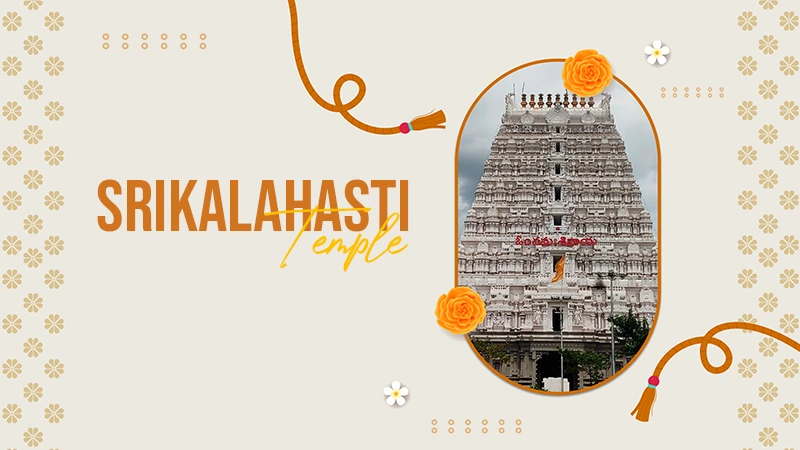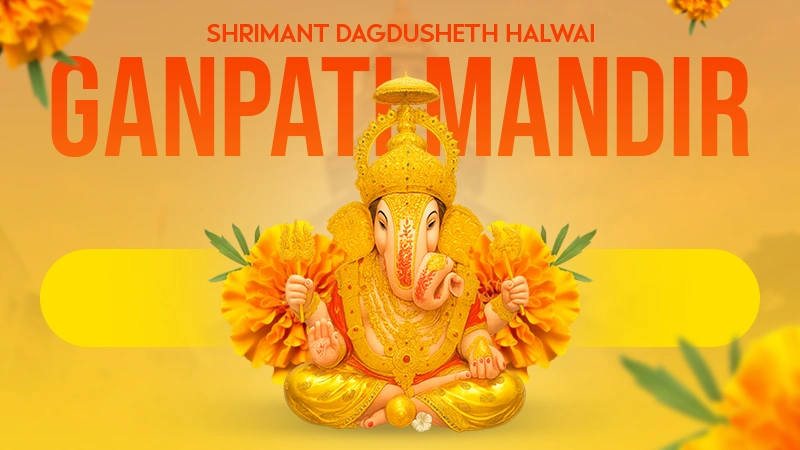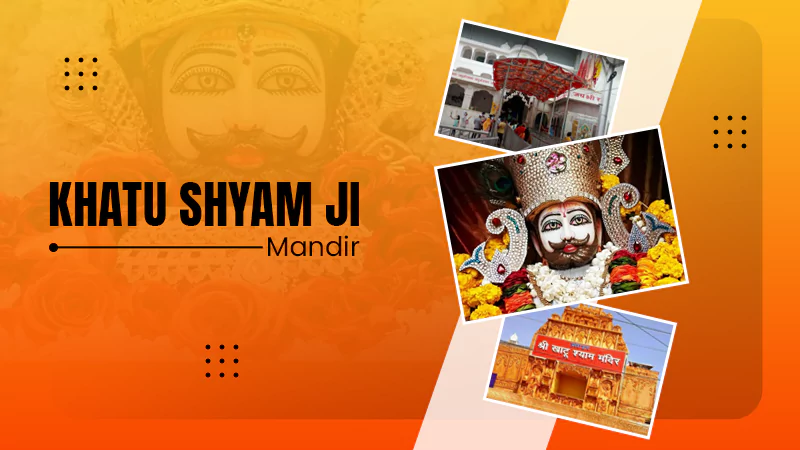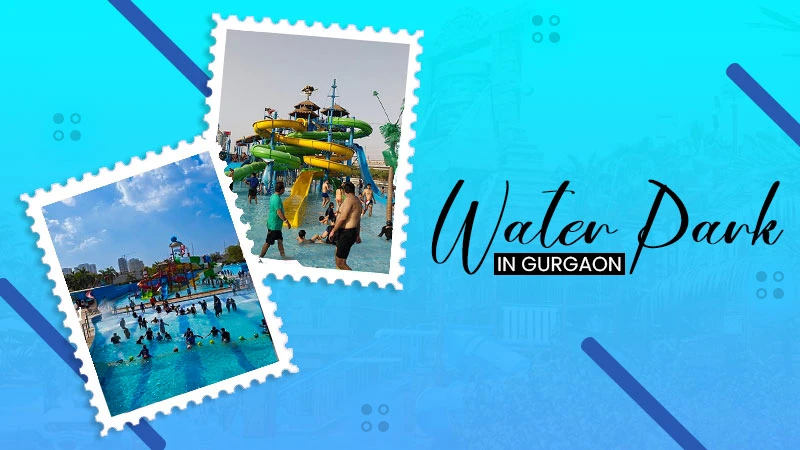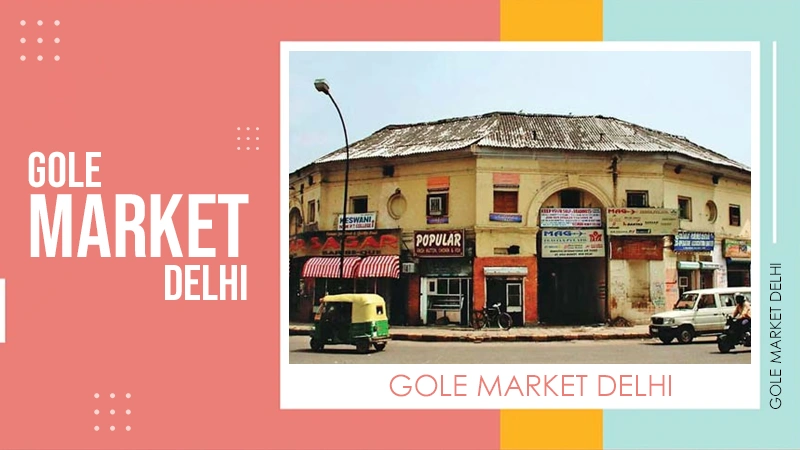
- Naneghat Trek Overview
- How to Reach Naneghat Trekking Point
- Best Time to Visit Naneghat Trek
- Naneghat Trek Difficulty Level
- Main Attractions at Naneghat Trek
- Naneghat Trek Photos
- Important Information About the Naneghat Trek
- Things to Carry While on Trek
- Famous Places to Visit Near Naneghat Trek
- Final Words
Have you ever dreamed about experiencing the serenity of the lush green forest, deep in the wilderness of the Western Ghats?
Naneghat is one of the most captivating jungle treks in Maharashtra, dotted with rock-cut ancient caves, an unthinkable variety of flowers and bugs, and an array of big and small waterfalls.
The Naneghat trek difficulty level is considered to be comparatively easier than the Harishchandragad trek and is also perfect for a solo trekking experience.
Consider this article as a small handbook to help you through your trek at Naneghat, along with all the important information and directions.
Naneghat Trek Overview

Attention! This overview contains some crucial information about the history and geographical location of the Naneghat trek that you should know if you’re doing this trek.
Naneghat is a mountain pass that connects the Konkan Coast and Junner Coast in the Pune district of Maharashtra.
This mountain pass is situated at an elevation of 2800 feet (0.85 km), which was also an extremely significant trade route during the Satavahana dynasty.
“Nane” means coin in Marathi, which makes up the perfect name for the place since it was used as a toll booth to collect tolls from traders crossing the hills in historic times. You can still see the huge toll collection pot at the trek site.
Naneghat is considered one of the most beautiful places in India, just like the Kalu waterfall, which is also in Maharashtra.
| Attribute | Details |
| Trek Height | 2800 feet (0.85 km) |
| Naneghat trek distance | 6 kilometers (one way) |
| Trek duration | 2.5–3 hrs |
| Naneghat trek distance from Pune | 122 km (3 hours 29 minutes) |
| Naneghat trek distance from Mumbai | 170 km (4 hours 48 minutes) |
| Entry Fee | None |
| Naneghat trek difficulty level | Easy |
| Base Village | Vaishakhare |
How to Reach Naneghat Trekking Point
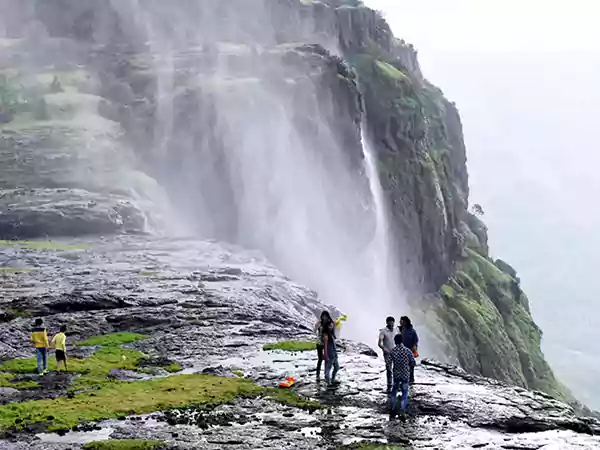
If you are looking to explore the trek, the best option for you will be to tag along with a travel company since they provide transport, food, and a guide. But if you wish to explore on your own, here’s how you can reach the Naneghat trekking point.
The base village of the trek is Vaishakhare, which is easily accessible by local transport.
How to Reach from Pune
Naneghat trekking point is about 146 km away from Pune and if you have your vehicle, it’ll take about 3 hours and 42 minutes to reach. Move via Khed Bypass to the trekking point. For your convenience, I’ve attached the directions down here ~
If you don’t have access to any personal transport, here’s how you can reach Naneghat by bus and train ~
- Train — From Pune you can board Indrayani Exp (22106) at 3:35 am and get down at Kalyan station at around 6:10 pm. This is so far you can get by train, after this you need to catch a local bus towards Alephata and get down at exactly 5 km after Tokawade station.
- Bus — You can either board a bus straight to Kalyan or Tokawade and get down at Naneghat which is exactly 5 km prior to Tokawade check point.
How to Reach from Mumbai
Naneghat trekking point is about 109 km away from Mumbai and if you have your vehicle, it’ll take about 2 hours and 53 minutes to reach. Here are the directions ~
If you don’t have access to any personal transport, here’s how you can reach Naneghat by bus and train ~
- Train — You can board Vande Bharat Express from Mumbai to Kalyan and get down at Kalyan station. From there you can catch a local bus towards Alephata and get down at exactly 5 km after Tokawade village.
- Bus — Board on a bus going towards Tokawade, get down at the starting point of Naneghat, which lies just 5 km ahead of Tokawade village.
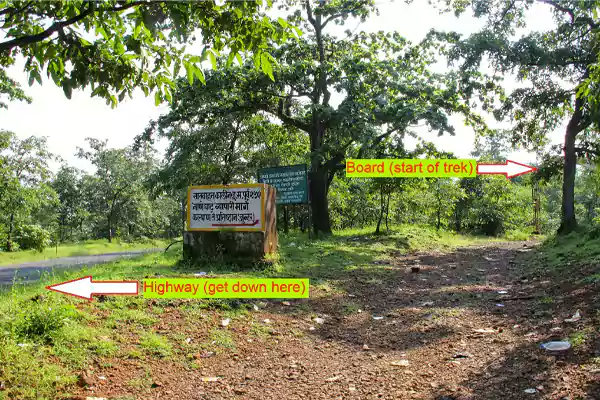
Best Time to Visit Naneghat Trek
Trust me, be it Nanemachi Waterfall or Kalsubai Peak, the best time to visit any place in Maharashtra is during the monsoon season.
The peak monsoon season in the state usually lasts from July to September, which is both the best and the most dangerous time to complete the Naneghat trek.
Visiting during monsoon will ensure that the waterfall will be full and flowing, plus the whole western ghat will be covered under a blanket of greenery.
However, visiting during the peak monsoon month like July can also be dangerous, since the situations in the valley can quickly turn from beautiful to life-threatening if it rains too much.
Also, since Naneghat is a popular trek amongst the locals, you might find it a bit crowded on weekends so if you’re looking for a secluded place with a silent and calming atmosphere, visit on weekdays.
Naneghat Trek Difficulty Level
Honestly speaking, the trek difficulty is not fixed, it depends on the trekker’s fitness. For me, it was relatively easy, but that was not the case for many in our group.
So if you’re fit and someone who treks quite often, Naneghat will look easy for you. But if trekking is a completely new concept, the trek might look moderately difficult.
The total length of the trek is approximately 6 kilometers, which can be covered in 2.5 to 3 hours or less.
The steps of the trek get super slippery along with strong winds in monsoon, which adds to the difficulty of the trek.
Main Attractions at Naneghat Trek
If you love to explore historical artifacts preserved in the lap of nature, this trek is ideally suited for you!
The reverse waterfall is not the only main attraction of the trek. I have here a simple list of other amazing things that you should explore while on the trek.
Rock Caves

Naneghat is an ancient trading route that is famous for its impressive rock-cut caves that might date back to 1st century B.C.
The caves have inscriptions carved on the walls that link to both Vedic and Hindu deities, with the mention of some rituals and modern-era numerals.
Nanacha Angtha

Nanacha Angtha is a sheer cliff and well-known landmark which is visible even from the Konkan region.
This is basically a piece of land that’s bent away from the original structure, forming a cliff and providing an excellent view of the Sahyadri.
Toll collection pot
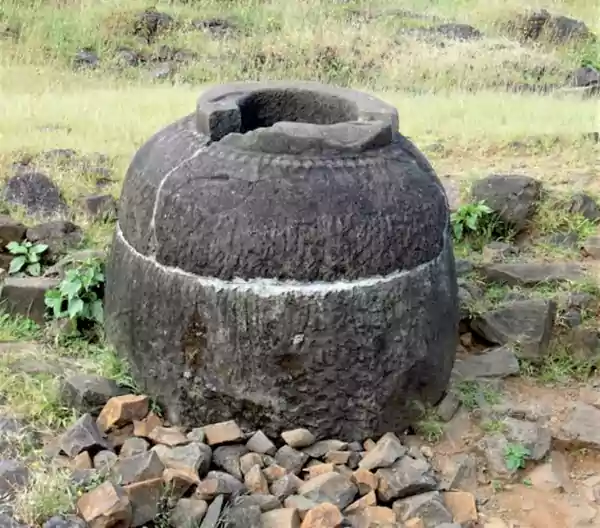
As I mentioned above, Nanenghat was a popular crossing used widely in the area, and so all traders had to pay tax/toll to cross the ghat.
This money was collected in a huge rock-cut pot. The pot is now just a tourist attraction.
Reverse waterfall

The reverse waterfall is an interesting and breathtaking phenomenon — literally. All the air left my lungs when I watched the water blow upward instead of going down. This waterfall was even mentioned in The Times of India
It was seriously crazy to experience something so magical with my own eyes. The physics behind the reverse waterfall is not anything too complicated, it’s just superfast wind that stops the water from dropping and blows it back to the surface.
The winds in the area are so strong that you won’t be able to stand straight for a single minute.
Unfortunately, I didn’t make any vlogs, but you can look at Aniruddha Patil’s YouTube vlog on Naneghat trek where he is exploring every bit of the place and decide for yourself if this place is worth the effort.
Naneghat Trek Photos
Here are some mesmerizing photos of the Naneghat trek and the viewpoint ~
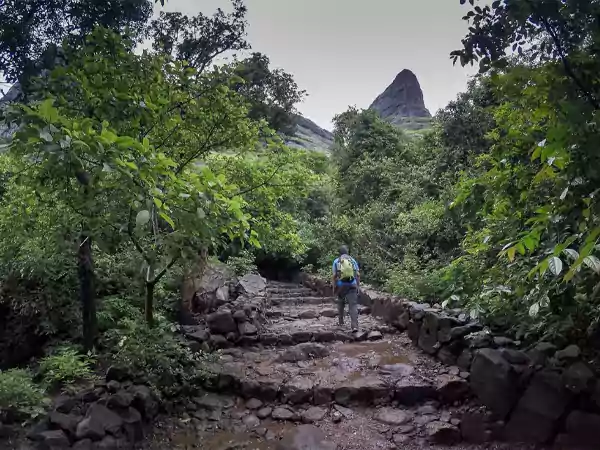

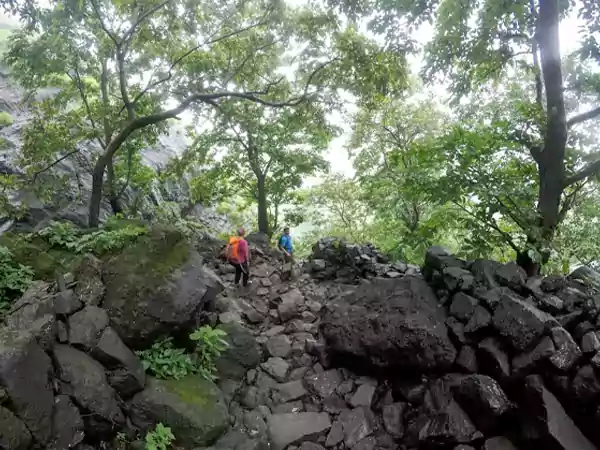
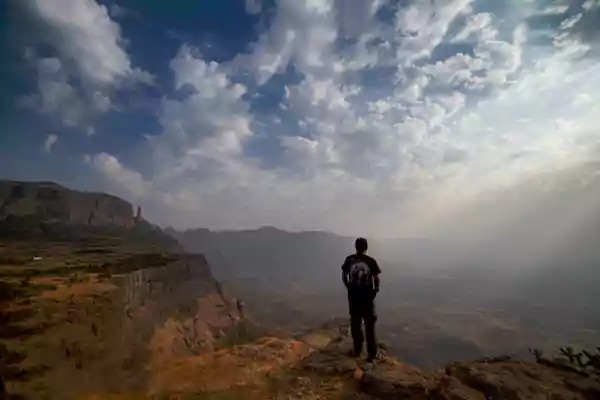
Important Information About the Naneghat Trek
While trekking, I witnessed many colors of nature, some were beautiful, and some were dangerous. Throughout the trek, I collected some essential information that every first-timer should know about.
- Carry some dry fruits, dry snacks, or energy bars — preferably something sweet — to recharge your energy on the trek.
- Sun caps and sunscreen are extremely essential, even if you can’t see the sun in the fog.
- Carry at least 2–3 liters of water.
- Do not wear slippers or crocks while trekking. Wearing proper boots will allow you to trek comfortably and prevent the risk of getting bitten by insects and baby crabs or getting injured.
- The forest is filled with leeches, and if you stop and sit somewhere, they’ll surely stick to you. So if you need to stop, make sure you’re standing/sitting on rocks.
- Wear full-sleeved clothes and trek pants to protect yourself from thorns, insects, and prickles.
- If you’re visiting during peak monsoon, carry a raincoat with you because, no matter how much you love the rain, it’ll annoy you at some point.
- Keep personal first aid handy, you might need it more than once during the trek.
- Pack light so that you can easily move around with your backpack.
- Identity proof is significant, so keep it with you at all times, especially if you’re not a native of Maharashtra.
- If you’re visiting during peak monsoon, make sure to carry warm clothes with you, since the temperature drops suddenly.
- Double pack your valuables/phones in plastic bags.
Things to Carry While on Trek
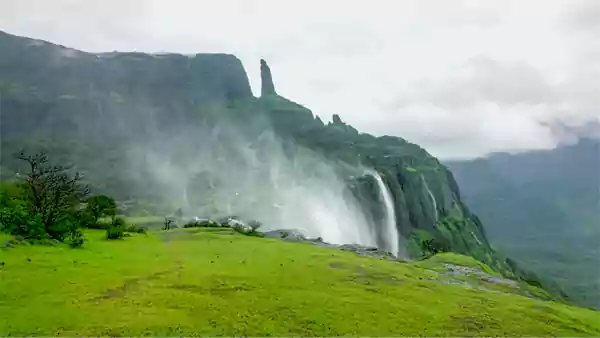
If you’re a beginner at trekking, know that there are certain essential things you need to carry at all times while trekking.
- Carry a trekking stick so that it’s easier for you to trek in slippery conditions.
- Trekking shoes are essential for better grip.
- Carrying a flashlight is non-negotiable, even if you’re trekking in broad daylight.
- Carrying a sun cap, sunscreen, and goggles is important to protect yourself and your skin from the ruthless rays of the sun.
- Identity proof.
- Carry some sweet snacks like chocolates and energy bars.
- Carry umbrellas and raincoats since rain is inevitable if you’re visiting in monsoon.
- Carry basic first aid, sanitizer, and personal medications.
- Carry your own water bottle and at least 2–3 liters of water.
- Carry a power bank with you in case the trek takes longer than expected.
These are only the essential items to help you on the trek, you can carry more stuff that you feel might be of use, as long as your backpack is not too heavy.
Famous Places to Visit Near Naneghat Trek
I didn’t have time to explore nearby places on my visit, but if you do, here are some amazing and must-visit places near the Naneghat trekking point.
- Vaanarlingi Pinnacle
- Jivdhan Fort
- Mahadev Mandir
- Jivdhangad Darwaja
- Jalwandi Waterfall
- Nimgiri Fort
Final Words
If I had to describe the whole trek in two words, I would say — breathtaking and crazy. Imagine making your way through the dense green forest, navigating through loose rock, and witnessing the panoramic view of the Sahyadri ranges.
Sounds insanely adventurous right?
So, what are you waiting for? Grab your backpack and experience the adrenaline rush of conquering the peaks of Sahyadri.
Is the Naneghat trek difficult?
The Naneghat trek Difficulty Level is somewhere between easy-moderate.
Is Naneghat Trek for beginners?
Yes, even beginners can easily do this trek, but guidance is recommended.
What is Naneghat famous for?
Naneghat is most famous for its reverse waterfall and the inscriptions that have been significant for historical study.
Is Naneghat worth visiting?
Naneghat trekking point is challenging and adventurous but is completely worth the hype!
Which railway station is near to Naneghat Waterfall?
Kalyan railway station is the one closest to the Naneghat waterfall, from there you take a local bus to the trekking point.

